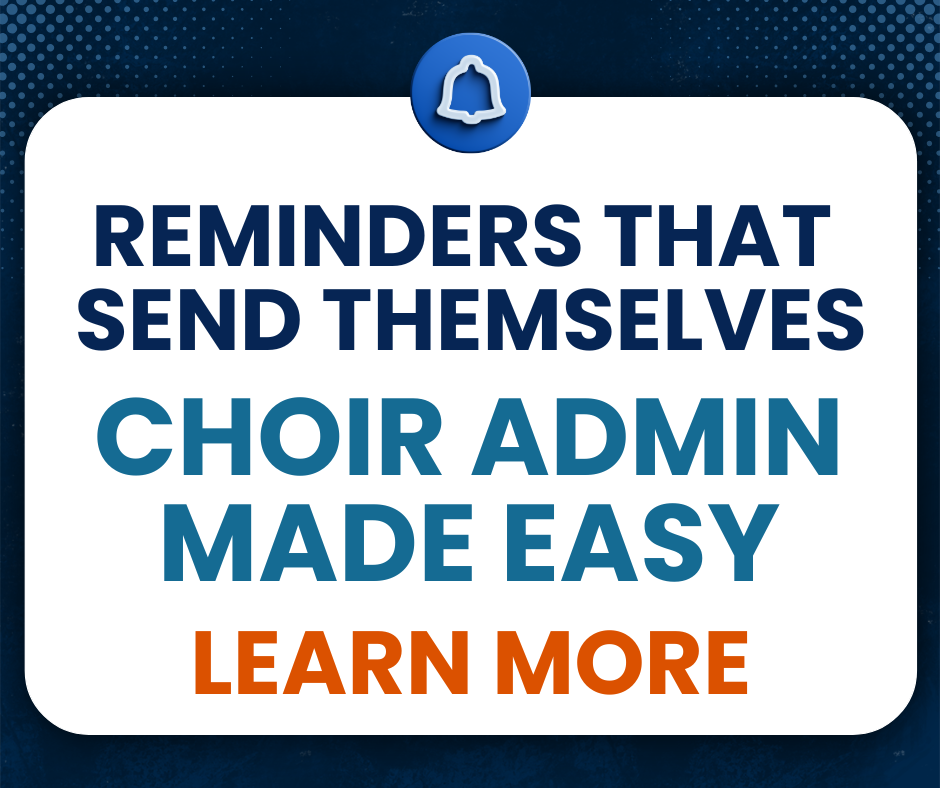Mastering Choir Governance: Leadership Strategies for Choral Success
In the world of choral music, leadership is as essential as the harmony in a well-rehearsed performance. Governance provides the foundation on which choirs can grow, connect, and thrive. Whether you're managing a community ensemble or a professional chorus, thoughtful leadership helps ensure that the artistic and administrative sides of your organization move in concert.
This post explores the key components of choir governance and leadership, offering actionable insights to help your ensemble operate more effectively and build a strong, sustainable future.
The Role of Leadership in Choirs
Leadership in choirs goes far beyond the conductor’s podium. It encompasses artistic vision, logistical planning, and the ability to motivate and support singers and volunteers. Strong leaders help shape a choir’s identity and direction, making strategic choices that balance musical goals with organizational needs.
Effective choir leaders listen, adapt, and lead with empathy. Whether it’s the director, administrator, or board member, each leadership role plays a part in shaping the choir’s future.
Structuring Choir Governance
Well-defined governance structures help choirs operate smoothly and make decisions more efficiently. Many choirs are supported by a leadership team or board that may include roles such as choir manager, president, treasurer, secretary, and section leaders.
Clear roles and responsibilities reduce confusion and allow volunteers and leaders to focus their efforts where they’re most needed. Establishing bylaws, job descriptions, and operating procedures can help clarify expectations and maintain accountability.
Collaborative Decision-Making
Leadership should be a shared responsibility. Regular planning meetings and open communication channels allow all members to contribute their perspectives. Involving singers and volunteers in decision-making builds trust, encourages buy-in, and strengthens community bonds.
Tools such as shared calendars, surveys, and digital communication platforms can streamline collaboration and ensure every voice is heard.
PRO TIP: Choir Genius offers a number of these communication features - event scheduling with links and attendance tracking, volunteer management, a digital music and documents area, and forms to collect survey results.
Vision and Goal Setting
A choir’s long-term success depends on a shared vision. Establishing clear, measurable goals helps align members and leadership. These might include growing membership, developing new programs, improving performance quality, or expanding outreach.
Revisit these goals regularly and celebrate progress along the way. A shared purpose gives your ensemble a strong foundation for growth.
Transparency and Accountability
Trust is earned through transparency. Make information such as meeting notes, financial reports, and strategic plans available to members. Regular updates on projects and decisions help everyone feel informed and engaged.
Clear expectations, follow-through, and openness about challenges foster a culture of accountability and mutual respect.
Nurturing Talent and Leadership Development
Encouraging leadership at all levels helps secure your choir’s future. Identify and support members with leadership potential through mentorship, professional development, or by giving them small roles with increasing responsibility.
Offering workshops, skill-sharing sessions, or rotating leadership duties can help build confidence and a strong internal leadership pipeline.
Embracing Diversity and Inclusivity
A diverse leadership team enriches your choir’s culture. Leaders who reflect different backgrounds and experiences can better understand and support the full spectrum of your members.
Inclusive governance practices - such as rotating roles, using pronouns, or offering multilingual materials - can help make all members feel seen, valued, and welcome.
Conflict Resolution and Cohesion
Disagreements are natural in any group. Effective leadership involves addressing conflict constructively, using active listening and mediation techniques. The goal is to preserve relationships, align on shared goals, and move forward together.
Establishing a conflict resolution policy or code of conduct ensures that issues are addressed consistently and respectfully.
Adapting to Change
Choral organizations need to evolve with the times. Whether adapting to new rehearsal formats, digital tools, or changing community needs, choir leaders must stay open to innovation.
Being responsive to feedback and regularly reviewing operations helps your ensemble remain agile and relevant, no matter what the future holds.
Celebrating Success and Learning from Challenges
Taking time to recognize accomplishments boosts morale and motivates continued effort. Celebrate performances, milestones, and behind-the-scenes wins. Equally important is learning from setbacks - reflecting on what worked, what didn’t, and how your choir can improve.
This growth mindset helps your choir remain resilient and continuously improve.
Governance and leadership are the backbone of a successful choir. From setting the vision to fostering a welcoming environment, effective leadership ensures your ensemble functions with both harmony and purpose.
When choir leaders lead with clarity, compassion, and collaboration, they create an environment where music and community flourish. And that’s something every singer and every audience can feel.





